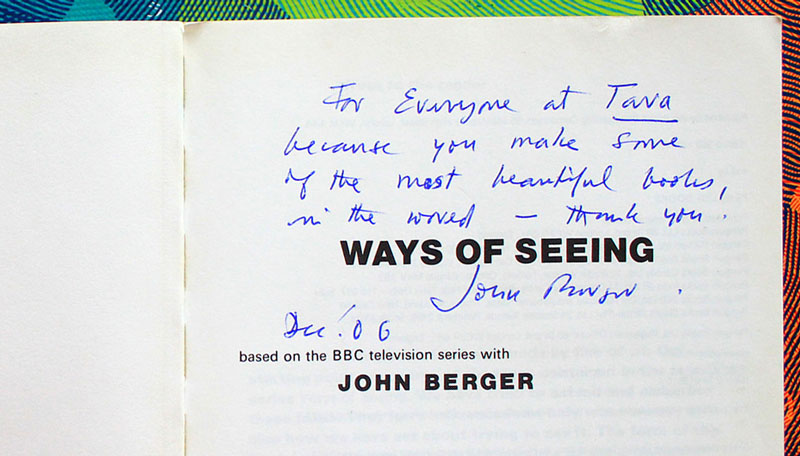
24 Feb Making Connections: a Tribute to John Berger
by Gita Wolf & V. Geetha
Like for so many others, John Berger was an inspirational figure for us, a long while before Tara was born or even thought of. It was from him that we learnt to look at and think about art in a way that no one had taught us before. As young feminists, his ideas became a kind of foundation, a place from which it was possible to set out and look at things differently.
And then when Tara came into being, twenty-two years ago, this exploration became more concrete. We were inspired by how Berger forged his own path with great integrity; and admired his ability to put across complex ideas in a simple and unpretentious way. Our circumstances were very different from the ones on which his writings were based, but the most important thing we learnt from him was a way of connecting: aesthetics with politics, form with content, art with labour, style with context, experimentation with communication. In the years of Tara’s existence, we have taken several directions and created very different kinds of books – but this framework of connection is essentially what holds a Tara book together.
John Berger’s generosity was legendary, and when he agreed to write a blurb for our The London Jungle Book, we were over the moon. It’s not often that you get to meet your heroes, and sometimes, when you do, it can turn out to be disappointing. But not so with John. He was every bit as inspirational as his writings, and over the years, though we didn’t stay in regular touch, he remained a friend of Tara. The last time we met was at the launch of Nurturing Walls, our book (currently out of print) about the Meena tribal women painters of Rajasthan. He called the animal images which they created on the floors and walls of their village homes “the oldest subject in art”, which lovingly turned living spaces into hospitable homes.
Recently, listening to this talk once again, we thought of something that he had said about animal imagery elsewhere, in another context: “Within their parallel lives, animals offer man a companionship which is different from any offered by human exchange. Different because it is a companionship offered to the loneliness of man as a species.” (Why Look at Animals?)
He seemed to be describing, quite uncannily, something that we had observed while working with many of our indigenous artists – a relationship to animals that was quite special. Beasts of India – our very first handmade book – was in fact a collection of animal images painted by artists from different folk and tribal traditions. Each animal revealed the uniqueness of an art form – every style had its own typical way of rendering. But there was something more here: in spite of the ‘generic’ representation, the animals we selected for the book possessed a curiously individual spirit. It was the beast-ness of the beast that the artist had captured, and this seemed to come through a feeling of relatedness, an ineffable sense of kinship with the creature.
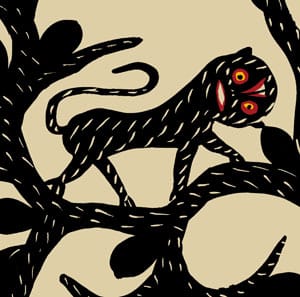
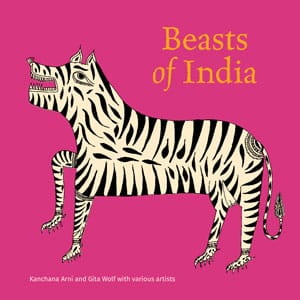
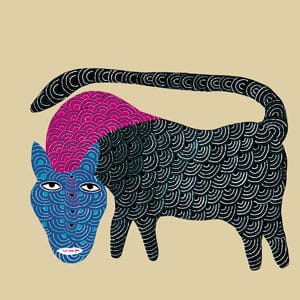
A monkey, a tiger and a bull from the Beasts of India.
It brought to mind something else that Berger had once said: “One is looking at something that has been worked with a mysterious skill and a kind of love…” (The White Bird). He was describing birds made of white wood by peasants in a French mountain community during the long winter months. We turned to this piece of writing, and found that he had listed five qualities that rendered these birds so mysterious and pleasing: they were figurative representations; the artists’ choice of subject (a living bird) in the context of where it is placed (indoors where live birds are unlikely) made it symbolic; then there was a respect for the material, along with a formal unity and economy – and all this provoked astonishment in the viewer. The passage made us look again at particular birds that three indigenous women artists had painted for us.
Birds: by the Gond artist Durga Bai – the Bhil artist Gangu Bai – and the Meena artist Sunita.
How were we to understand and appreciate these birds? What makes for beauty and balance here? Indigenous art doesn’t set out to be ‘realistic’, and artists generally use inherited motifs and symbols when they paint. These could be decorative, figurative, or symbolic, or a combination of all the three. Artists remain faithful to their inheritance, but still manage to bring something of their own vision into their work. There is repetition, of what has been done before, but repetition is always a subtle and sometimes astonishing reworking of what has been learned. The result is art that is a mixture of formality and freedom, and individual artists, like these women, push the boundaries of what is possible.
Berger captures this perfectly when he says: “Art does not imitate nature, it imitates a creation, sometimes to propose an alternative world, sometimes simply to amplify, to confirm, to make social the brief hope offered by nature. That we find a crystal or a poppy beautiful means that we are less alone, that we are more closely inserted into existence than the course of a single life would lead us to believe.” (The White Bird).
Seen this way, our artists have managed to do something quite profound: they have succeeded in fusing the natural and human worlds in a very unselfconscious way. How do we account for their skill and ingenuity? All three women come from simple rural backgrounds – far poorer, but not basically unlike the French peasants who make the wood carvings that Berger talks about.
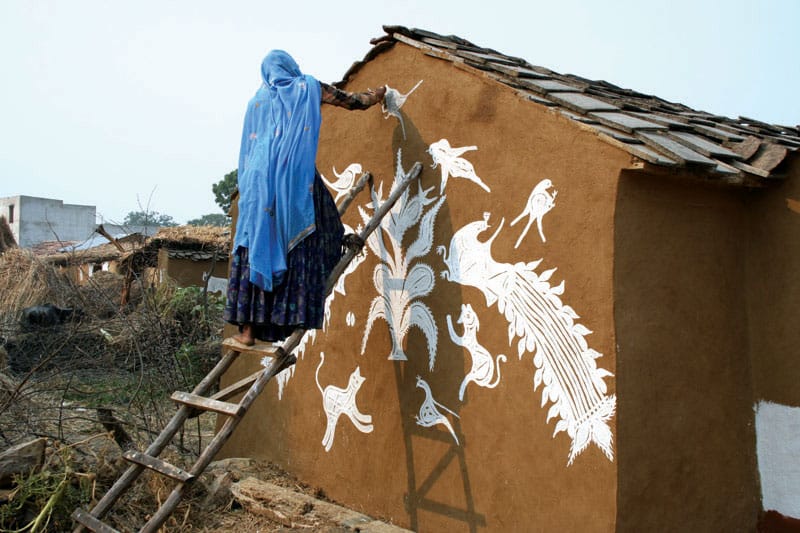
A woman from the Meena community painting the walls of a house in their traditional style
Originally, women like them would paint decorative patterns and motifs on the floors and walls of their homes, to mark the seasons or important festive events. It was broadly part of what we can call creative domestic labour, using skills which were handed down through generations. While many of these practices continue to this day (like with the Meena women), some talented women – and men – also began to paint images on paper and canvas, eventually going on to create entirely new forms. But they did this not merely as a means to self-realization, it was just as much a way of supplementing their meager income, to make a living. So an indigenous artist could be considered a special kind of worker, who labours, in the most fundamental sense of the word, at creative work. But her work is seldom part of the art world as we know it today.
“The category of the professional artist, as distinct from the master craftsman… ” says Berger, “… was not clear until the 17th century (and in some places, especially in Eastern Europe, not until the 19th century). The distinction between profession and craft is at first difficult to make, yet it is of great importance. The craftsman survives so long as the standards for judging his work are shared by different classes. The professional appears when it is necessary for the craftsman to leave his class and ‘emigrate’ to the ruling class whose standards of judgment are different.” (The Primitive and the Professional)
One of our best known artists Bhajju Shyam (who actually met Berger during the launch of his London Jungle Book in London) has thought deeply about these issues, in his own, very different, context: “People call us craftsmen because we sell our work in bazaars, and because they think we ‘copy’ each other’s work. They don’t realize that this is the way tradition is passed on – we inherit a style, and good artists take it forward in their own way.”
Bhajju’s remarks push us to reflect on some important questions that Berger would have relished. They resonate with his own concerns, yet they pertain to a different cultural context: When the artist paints for his livelihood, is his art therefore less authentic? Can we rethink the relationship between the artist and his or her tradition – so that tradition is not seen as a set of confining rules but as something that comes alive in the doing, in the actual rendering?
Taking the art forward and making creative leaps needs another important impetus: a new context and purpose. There have been several such historical interventions over the last decades, which have taken indigenous art along new paths. We ourselves have contributed to this, over the years, by offering artists the form of the book as a space in which they can re-imagine their art.
How did John Berger put it? “Art supposes that beauty is not an exception – is not in despite of – but is the basis for an order.” (The White Bird)
Thank you, John.
Gita Wolf started Tara Books, as an independent publishing house based in India. An original and creative voice in contemporary Indian publishing, Gita Wolf is known for her interest in exploring and experimenting with the form of the book and has written and over twenty books for children and adults. Several have won major international awards and been translated into multiple languages. Click here to discover Tara Books she has authored.
V. Geetha is a writer, translator, social historian, activist, and a freelance editor and a leading intellectual from Tamil Nadu, India. She has been active in the Indian women’s movement since 1988, organizing workshops and conferences. Geetha has written widely, both in Tamil and English, on gender, popular culture, caste, and politics. Click here to discover Tara Books she has authored.


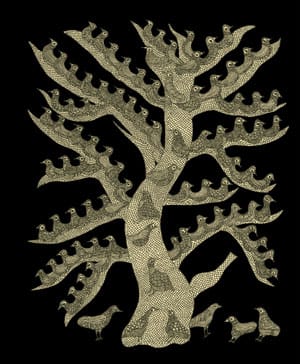
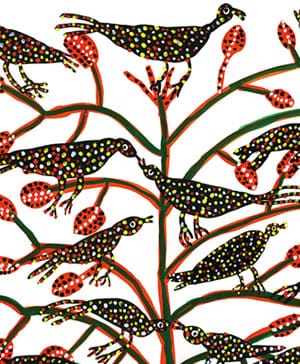
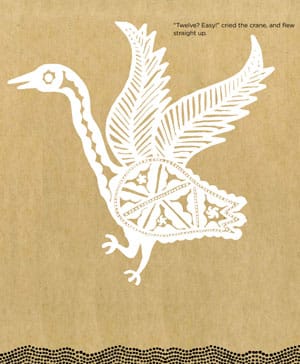
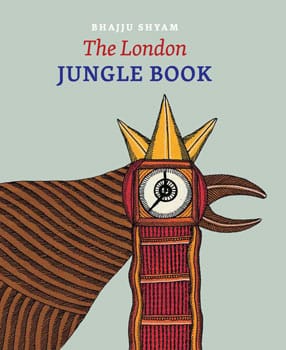
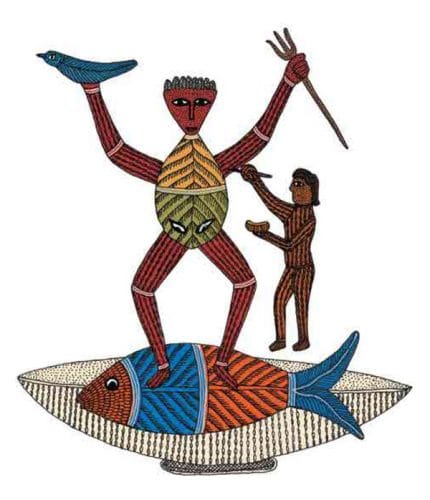
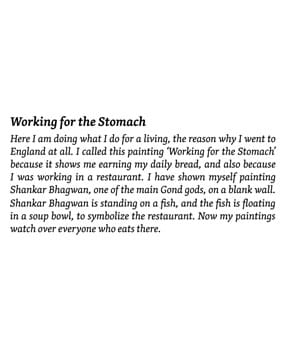
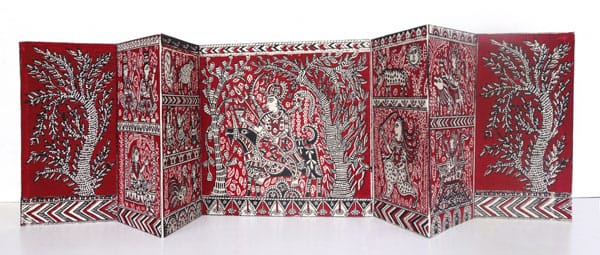


Gary Michael Tartakov
Posted at 04:06h, 18 MayDear Geetas,
Our son has just sent us your life of Martin Luther King Jr.
I love it. I could see it was yours as soon as I was a couple of pages in.
And so I looked up your site to see what I could
You both look as happy as when I visited, so long ago
It if very pleasing to see you are flourishing in this endeavor.
chandan crasta
Posted at 16:35h, 19 Marchhi , i love your alternative children’s books. I am an illustrator and graphic designer. I work in a rather lost medium of illustration – linocut. After looking at your books i think a book with linocut illustration would work very well for your audience. Do get in touch with me and i can mail you my work., i would love to do some work for you.
In the meanwhile you can have a look at some of my work here. http://www.instagram.com/soliloquysketch/
Thanks for the time
chandan crasta